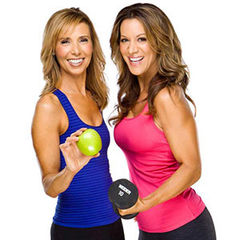Do you sleep well but often feel tired, exhausted or lethargic? Are you unable to focus or do you have shortness of breath? If you frequently experience any or all of the above you may have iron-deficiency anemia. Whether you are an elite athlete or a weekend warrior, being involved in regular physical activity puts you at an increased risk for becoming anemic. Anemia affects one in five women of reproductive age, and commonly occurs in vegetarians or vegans who do not consume iron-rich foods.
What Iron Does for the Body
Getting enough iron is important for the formation of red blood cells and for healthy immune function. Iron-deficiency anemia is one of the most common nutritional deficiencies worldwide.
Iron plays multiple roles in the body. It is an essential component of hemoglobin, which carries oxygen from the lungs to the tissues. As a component of myoglobin, a protein that delivers oxygen to the muscles, it supports metabolism. Iron is also needed for growth, development and normal cellular functioning.
Healthy adults usually have 3 to 4 mg of iron stored in their body, mostly as hemoglobin. The rest is stored as ferretin or hemosiderin in the liver and spleen, in bone marrow and as myoglobin in muscles. We typically lose a small amount of iron in urine and feces, and through the gastrointestinal tract and sweat. Athletes are at higher risk for iron loss due to increased sweat volume and through footstrike hemolysis. Losses are also greater in menstruating women.
Food Sources of Iron
Iron is an essential nutrient, which means you have to obtain it from food as your body does not make it. There are two types of iron found in food: heme and non-heme iron.
Heme iron is found in animal proteins such as beef, pork, chicken, lamb and fish. Heme iron has higher bioavailability than non-heme iron, at about 14 to 18 percent, and is increased in the presence of vitamin C.
Non-heme iron is found in greens, eggs, nuts, beans and fortified grains. Both the presence of vitamin C and heme iron can increase absorption of non-heme iron, which is about 5 to 12 percent. Due to the lower bioavailability of non-heme iron, vegetarians and vegans are at a higher risk for iron-deficiency anemia and should work with a nutrition professional to develop a dietary plan that will maximize iron intake.
Calcium can interfere with the absorption of both heme and non-heme iron. Careful planning is encouraged so that these foods are eaten at separate meals.
|
HEME IRON FOODS |
NON-HEME IRON FOODS |
|
Beef |
Spinach |
|
Lamb |
White beans |
|
Chicken |
Fortified cereal grains |
|
Turkey |
Lentils |
|
Pork |
Tofu |
|
Seafood |
Kidney beans |
|
Oysters |
Dark chocolate |
How Much Iron Do You Need?
Iron needs vary depending on stage of life. Children have different needs than adults and women need more than men. Women who are pregnant are at high risk for developing iron-deficiency anemia due to the increased in blood volume and production of red blood cells.
The following table represents the iron needs for healthy people. Iron needs for athletes are 1.3 to 1.7 times higher and for vegetarians the iron needs are 1.8 times higher.
|
Children 4-8 years |
10 mg |
|
Children 9-13 years |
8 mg |
|
Adult women 19-50 years |
18 mg |
|
Adult men 19-50 years |
8 mg |
|
Pregnant women |
27 mg |
|
Breastfeeding women |
9 mg |
Are You at Risk for Iron-deficiency Anemia?
The following groups are at highest risk for developing anemia:
Pregnant Women
During pregnancy, blood volume and red blood cell production increase to support the growing fetus. Iron deficiency during pregnancy increases risk for maternal and infant mortality, preterm birth and low birthweight.
Infants and Children
Preterm infants or low-birthweight babies have higher iron requirements due to their rapid growth. Full-term infants usually do not run risk for iron deficiency until they begin eating solid food and, at that point, a well-balanced diet can keep iron levels normal.
Individuals Who Have Heavy Menstrual Periods or Who Frequently Donate Blood
Women with heavy periods as well as people who frequently donate blood (every eight weeks) are at high risk for developing iron-deficiency anemia due to the depletion of iron stores. Iron supplementation is often recommended to raise iron to normal levels.
Individuals With Gastrointestinal Disorders or Who Undergo Gastrointestinal Surgery
Celiac disease, Crohn’s disease, ulcerative colitis, ulcers and gastrointestinal surgeries all increase the risk for iron-deficiency anemia because the disorders cause iron malabsorption or increased bleeding.
Individuals With Cancer
Up to 60 percent of patients with colon cancer have iron deficiency anemia at diagnosis due to blood loss. Anemia is common in other forms of cancer due to chemotherapy-induced anemia and anemia of chronic disease.
Vegetarians and Vegans
Foods that have non-heme iron, which make up the bulk of a vegetarian or vegan diet, have a lower bioavailability than heme iron-containing foods. Additionally, phytates found in many plant foods can interfere with the absorption of iron. Consuming vitamin C-rich foods will help increase the absorption of iron from plant foods.
Endurance Athletes
Iron is lost in sweat as well as through footstrike hemolysis, which is the repetitive striking of the heel on the ground that causes a loss of red blood cells. Iron can also be lost through gastrointestinal bleeding common during strenuous exercise.
Individuals on Dialysis
People with kidney disease who are on dialysis lose a small amount of blood during the dialysis. Also, iron is usually limited on a renal diet and many medications can use up iron quickly or prevent it from being absorbed.
Signs of Deficiency
Symptoms of iron deficiency can also mimic symptoms of overtraining. Athletes should be properly evaluated with appropriate lab work to determine if iron deficiency is the cause of the symptoms, which include:
- Shortness of breath
- Cold hands
- Fast heartbeat
- Sores at the corner of your mouth
- Brittle and spoon shaped nails or hair loss
- Chronic fatigue
- Frequent injuries
- Recurring illness
- Loss of endurance and power in exercise
Iron deficiency does not usually happen overnight. A combination of poor nutritional intake and activity forces the body to tap into its iron stores, which depletes them. Depleted reserves cause the body to make smaller red blood cells, which carry less hemoglobin. Lower levels of hemoglobin means less oxygen going to the tissues. Blood work should be able to accurately diagnose iron-deficiency anemia.
Too Much Iron?
Adults with normal gastrointestinal systems are at low risk of iron overload. However, adult Caucasian males who have a mutation in the gene for hemochromatosis are at risk for iron overload. One in 10 have a mutation in the gene and 4.4 in 1,000 carry two mutations for the gene and have hemochromatosis. Symptoms of iron overload include liver cirrhosis, hepatocellular carcinoma, heart disease and impaired pancreatic function. Treatment includes chelation therapy and it is recommended to avoid iron and vitamin C supplements.
Should You Take an Iron Supplement?
If you have been diagnosed with iron-deficiency anemia and feel that you will not be able to take in enough iron from your diet, a supplement might be in order. There are many forms of iron supplements on the market, but many cause gastrointestinal upset and constipation. Look for supplements marketed as “slow iron” or “gentle iron” that contain ferrous bisglycinate, a form that is better absorbed and gentler on your digestive system.




 by
by 




 by
by